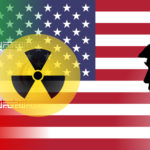Oil stockpiling in Iran as sanctions tighten

In just two years after Iran agreed to limit its nuclear ambition, the country’s oil exports in 2017 climbed as high as 2.1 million barrels per day. The figure was not far away from the peaks achieved in 2005 and 2011. However, things have taken a sour turn as in just nine months, last month, due to the U.S reimpose sanctions, the crude exports had dropped.
The exports had dropped to just 100,000 barrels per day, a drop of 95%. Iran is hit with strict restrictions, but are pumping huge quantities of oil with nowhere to send the resources. As a result of this stockpiling, markets could destabilize further. China has also tacitly put the product on sanctions gray zone. Since January, China has received as much as 14 million barrels of Iran crude but have refrained from clearing the commodity through to avoid running afoul of international sanctions.
“This represents about one day’s turnover for their refineries,” Kopits says. “It’s not nothing, but not the end of the world, either.” Any decision regarding the stockpiles could impact the oil markets already jittery about a potential oversupply of crude. Complicating the oversupply is the U.S.-China trade war and the looming chance of a global recession.
The price of Brent crude oil collapsed 7% in a matter of hours after United States President Donald Trump announced new tariffs on China’s products. Ellen Wald, president of Transversal Consulting and a senior fellow at the Atlantic Council Global Energy Center. “Right now, the oil market is much more concerned with demand and the global macroeconomic situation than it is with supply.”
15 years ago, a slightest hint of potential kink in global networks would have soared the oil prices but things have changed now. Dwindling output in Venezuela and Mexico, unrest in Libya, and even the downing of an American military drone over the Strait of Hormuz couldn’t impact the benchmark prices.









